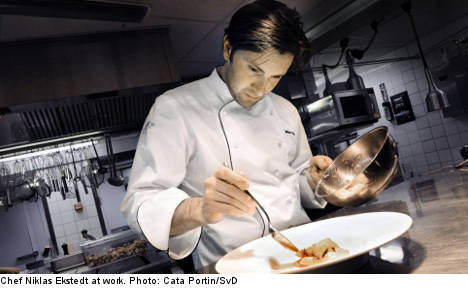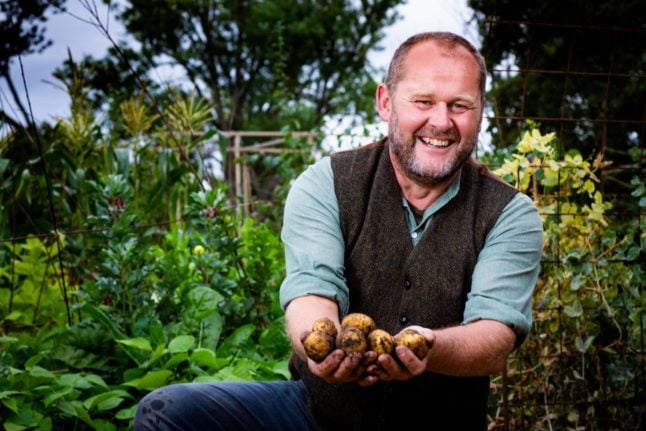Two of the restaurants – Ekstedt and Gastrolik – are in Stockholm and one – Sjömagasinet – is in Gothenburg.
“Unexpected and really fun. Thanks #Michelin and everyone at #ekstedt,” chef and restaurant-owner Niklas Ekstedt tweeted after receiving the news.
At Ekstedt’s restaurant, all dishes are prepared in a wood-burning hearth, fire pit or wood-fired stove.
The restaurant uses only Scandinavian woods to fuel its fires and the interiors are inspired by the nature of Ekstedt’s native Jämtland, a region in northern Sweden along the border with Norway.
“With the best that Sweden has to offer, and with inspiration from around the world, I aspire to create extraordinary dishes,” Ekstedt explains on the restaurant’s website.
“Prepared in the way our ancestors laid it out for us. Simply put, back to basics.”
Gastrolik, too, focuses on Nordic flavours and produce.
Chefs Jacob Holmström and Anton Bjuhr describe their restaurant as a “new-Nordic kitchen”, where seasonal supply and demand guide the selection of produce. That means the menu is always changing.
“We refuse to limit our selection of producers or offer a pre-determined menu, preferring to be inspired by the element of surprise,” the chefs explain.
Sjömagasinet in Gothenburg offers a classic kitchen inspired by the fruits of the sea, with head chef Ulf Wagner mixing traditional and creative dishes.
Wagner has worked alongside many famous chefs at a number of quality restaurants, including The Place. There, he became the first in Gothenburg to receive a one star in the Guide Michelin.
In total, thirteen Swedish restaurants now have 15 Michelin stars between them.
Only a couple of those have received two stars, but no Swedish restaurant has received the highest, three-star mark from the prestigious restaurant guide.
The Local/nr Follow The Local on Twitter




 Please whitelist us to continue reading.
Please whitelist us to continue reading.
Member comments